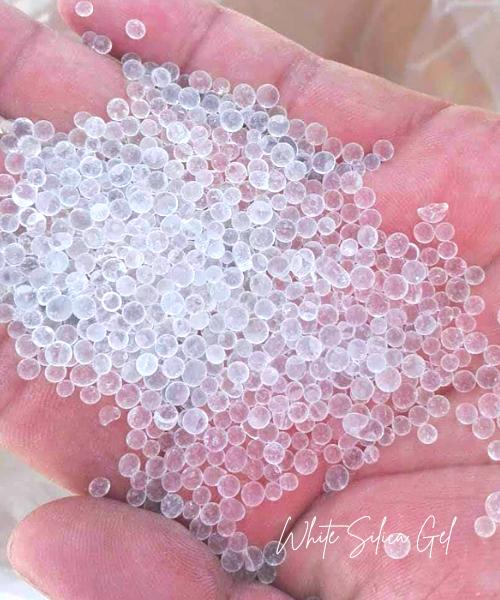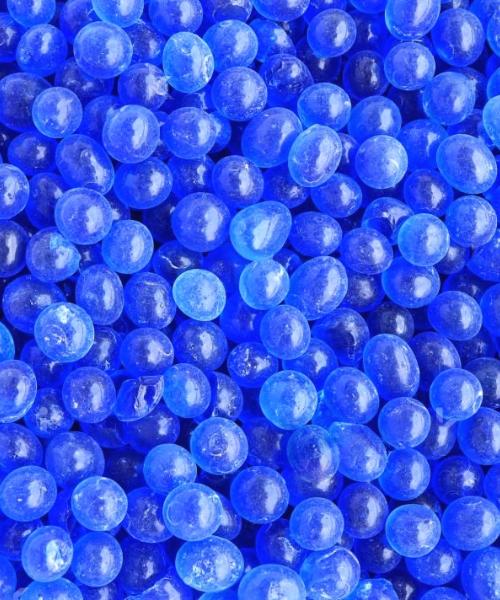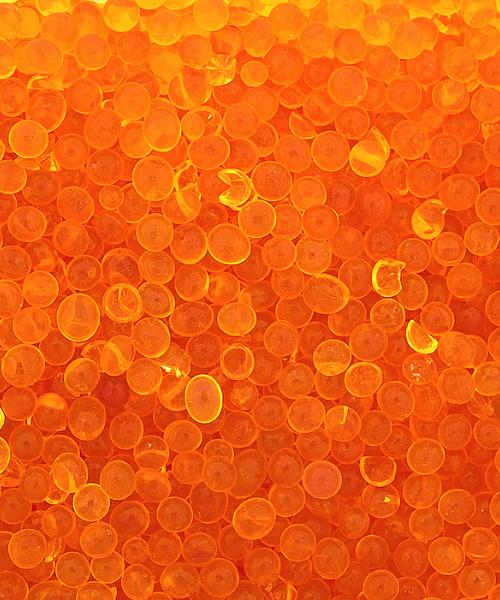Silica Gel Desiccant
Best Silica Gel Packaging holds the top position as the primary manufacturer of Silica Gel in Bangladesh, indicating that it produces a significant amount of this material in the country. Additionally, it is highlighted as the best solution for ensuring the availability of Silica Gel.
Blue Silica Gel
Color Change: Blue to Pink
Absorb Capacity: Up to 40%
DMF Free: SGS Certified
Reuse: Can be recycled
Price: Middle range
Availability: Always Available
White Silica Gel
Color Change: None
Absorb Capacity: Up to 40%
DMF Free: SGS Certified
Reuse: Can be recycled
Price: Affordable
Availability: Always Available
White Silica Gel is a refined and processed silicon dioxide
Orange Silica Gel
Color Change: Orange to Light-Green to Green to Dark-Green to Black
Absorb Capacity: Up to 40%
DMF Free: SGS Certified
Reuse: Can be recycled
Price: Expensive
Availability: Rare
What is silica gel?
Actually, silica gel is a granular, porous form of silicon dioxide, produced synthetically for its exceptional moisture-absorbing abilities. This compound is renowned for its high adsorption capacity, efficiently trapping moisture and other substances.
However, it can soak up moisture really well, silica gel is often used in packaging to keep things safe from getting damaged by water when they are stored or moved around.
Another thing, silica gel can be regenerated by heat to restore its moisture-absorbing properties, making it reusable for certain applications. It’s commonly found in various products’ packaging, including electronics, pharmaceuticals, garment’s items and foods, serving as a protective shield against excess humidity. Non-toxic and chemically inert, silica gel is a versatile solution for moisture control in various industrial and commercial settings.
Common varieties of silica gel include White Silica Gel, Blue Silica Gel, and Orange Silica Gel Desiccant.

White Silica Gel Desiccant
White silica gel is a variant of silica gel that is typically colorless or has a milky white appearance. Due to its ability to adsorb and hold moisture effectively, white silica gel is often used as a desiccant in various applications, particularly in packaging to protect sensitive items from moisture damage. It is used for electronics, pharmaceuticals, and food packaging.
Introduction of White Silica Gel Desiccant:
Good to know that, White Silica Gel Desiccants include their colorless or milky white appearance. It can be composed of highly porous silicon dioxide, these desiccants exhibit exceptional moisture-absorbing properties, making them effective in adsorbing and holding moisture.
Their versatility is a key feature, that’s why we’re manufacturing the best items for applications in various industries such as electronics, pharmaceuticals, and food packaging.
Also, white silica gel is often chosen for scenarios where a visually unobtrusive desiccant is preferred. These features make White Silica Gel Desiccants a reliable and adaptable solution for moisture control in diverse environments and applications.
Packing Paper
High Quality Filter Paper:
It circulates the air for both side that’s why it soaks up moisture easily to keep the products dry. And it sealed with silicon coat that is eco-friendly.
Non-Woven Fabric:
It is made with polyester and microfibre with heats level glue-coated. That’s why it’s very storng and also captures moisture completely.
Composite paper:
It’s white paper with PE-coated. You get to know it’s cheaper than other packing paper.
Other packing paper:
Tyvek, flimmed coated non woven fabric, OPP Film and etc.
Speciality
White silica gel is a highly porous, non-toxic desiccant renowned for its superior moisture-absorbing properties. Composed of amorphous silicon dioxide, it efficiently controls humidity by adsorbing water vapor, thus protecting products from moisture damage. Its primary applications include preserving pharmaceuticals, electronics, and food products by preventing mold, mildew, and corrosion. Additionally, white silica gel is favored for its reusability after drying and its lack of chemical reactivity, ensuring safety and stability across various storage conditions. Its transparent, granular form facilitates easy integration into packaging, making it a versatile and essential component in moisture-sensitive industries.
Blue Silica Gel Desiccant
Blue silica gel desiccant consists of beads or granules treated with cobalt chloride, a heavy metal salt. The cobalt chloride gives the desiccant a deep-blue color when it’s dry, and this color changes to pink as the desiccant becomes saturated with moisture.

Introduction of Blue Silica Gel Desiccant:
Blue silica gel desiccant is a special kind of drying material that has a color indicator, usually cobalt chloride, making it turn blue when it’s dry.
Besides, it’s really good at soaking up moisture and is used in places where it’s important to control humidity, like keeping electronics, instruments, garment’s items and medicines safe.
What’s cool is that the blue color changes to pink when it’s full of moisture, showing it needs to be replaced or dried out for reuse.
It actually helps stop mold and rust, and you can make it ready to use again by heating it up.
Packing Paper
High Quality Filter Paper:
It circulates the air for both side that’s why it soaks up moisture easily to keep the products dry. And it sealed with silicon coat that is eco-friendly.
Non-Woven Fabric:
It is made with polyester and microfibre with heats level glue-coated. That’s why it’s very storng and also captures moisture completely.
Composite paper:
It’s white paper with PE-coated. You get to know it’s cheaper than other packing paper.
Other packing paper:
Tyvek, flimmed coated non woven fabric, OPP Film and etc.
Speciality
Blue silica gel is a premium desiccant known for its moisture-absorbing efficiency and color-indicating properties. It contains cobalt chloride, which turns pink when saturated, providing a visual indication of its moisture absorption capacity. This makes it highly effective for monitoring and maintaining dry environments. Commonly used in safeguarding electronics, pharmaceuticals, and optical instruments, blue silica gel prevents damage from humidity. Despite its efficacy, it requires careful handling due to its cobalt chloride content, which can be toxic. Its ability to be regenerated through heating enhances its usability and cost-effectiveness, making it indispensable for moisture-sensitive applications.

Orange Silica Gel Desiccant
Orange silica gel desiccant is a type of moisture-absorbing material that is chemically treated to change color as it absorbs and adsorbs moisture.
This orange desiccant is known for being non-toxic and environmentally friendly, making it a preferred choice for companies that prioritize eco-friendly practices.
Introduction of Oranage Silica Gel Desiccant:
When in a dry state, it typically appears orange or yellow, and as it gradually becomes saturated with moisture, it transitions to a green color. This color-changing property provides a visual indication of the moisture-absorbing status of the desiccant.
Additionally, this non-toxic and eco-friendly desiccant is suitable for environmentally conscious companies. Orange silica gel finds application in various scenarios where visual monitoring of moisture is essential, including compressed air dryers, breathers, and safeguarding non-consumable packaged items.
It is also useful for drying and preserving flowers and seeds.
However, it is important to note that orange silica gel should not be in direct contact with products intended for consumption, such as food and pharmaceuticals.
Packing Paper
High Quality Filter Paper:
It circulates the air for both side that’s why it soaks up moisture easily to keep the products dry. And it sealed with silicon coat that is eco-friendly.
Non-Woven Fabric:
It is made with polyester and microfibre with heats level glue-coated. That’s why it’s very storng and also captures moisture completely.
Composite paper:
It’s white paper with PE-coated. You get to know it’s cheaper than other packing paper.
Other packing paper:
Tyvek, flimmed coated non woven fabric, OPP Film and etc.
Speciality
Orange silica gel is a non-toxic desiccant renowned for its efficient moisture absorption and color-changing feature, turning green upon saturation. Unlike blue silica gel, it is free from cobalt chloride, making it a safer option for various applications. It effectively protects electronics, pharmaceuticals, and food products from humidity-related damage by preventing mold, mildew, and corrosion. Its non-toxic nature makes it suitable for environments where safety is a priority. Orange silica gel can be regenerated through heating, extending its usability and making it a cost-effective solution for maintaining dry conditions in diverse storage and packaging scenarios.
Frequently Asked Questions
What's Benefits of using silica gel?
Silica gel is a strong desiccant that is used for a variety of purposes. Its main benefits include:
- Keeps products dry: White silica gel helps to protect products from moisture, which can prevent them from corroding or rotting. This is important for food, medicine, electrical appliances, and other products.
- Absorbs water vapor from the air: White silica gel helps to absorb water vapor from the air, which can prevent moisture and mold growth. This is important in laboratories, archives, and other places where moisture can be a problem.
Some specific examples of silica gel uses include:
- Food packaging: White silica gel is used to protect dry foods, such as fruits, vegetables, and prepared meals, from moisture.
- Medicine packaging: White silica gel helps to protect medicines from moisture, which can help to maintain their effectiveness and safety.
- Electrical appliances: White silica gel helps to protect electrical appliances from moisture, which can help to prevent damage.
- Eyeglasses and jewelry: White silica gel helps to protect eyeglasses and jewelry from moisture, which can help to maintain their wearability and shine.
- Laboratory equipment: White silica gel helps to protect laboratory equipment from moisture, which can help to maintain the accuracy of test results.
White silica gel is a safe and effective product that can be used for a variety of purposes. It helps to keep products dry, absorb water vapor from the air, and be reused.
How to Recycle Silica Gel?
- Spread the white silica gel on a baking sheet in a single layer.
- Preheat your oven to the lowest setting (around 200 degrees Fahrenheit).
- Bake the white silica gel for 2-3 hours, or until it is completely dry.
- Once the white silica gel is dry, remove it from the oven and let it cool completely.
- The white silica gel is now ready to be reused.
You can reuse white silica gel multiple times, but it is important to note that it will eventually lose its ability to absorb moisture. Once the white silica gel is no longer effective, you can dispose of it in your regular trash.
- Spread the white silica gel on a baking sheet in a single layer.
- Preheat your oven to the lowest setting (around 200 degrees Fahrenheit).
- Bake the white silica gel for 2-3 hours, or until it is completely dry.
- Once the white silica gel is dry, remove it from the oven and let it cool completely.
- The white silica gel is now ready to be reused.
You can reuse white silica gel multiple times, but it is important to note that it will eventually lose its ability to absorb moisture. Once the white silica gel is no longer effective, you can dispose of it in your regular trash.
- Spread the white silica gel on a baking sheet in a single layer.
- Preheat your oven to the lowest setting (around 200 degrees Fahrenheit).
- Bake the white silica gel for 2-3 hours, or until it is completely dry.
- Once the white silica gel is dry, remove it from the oven and let it cool completely.
- The white silica gel is now ready to be reused.
You can reuse white silica gel multiple times, but it is important to note that it will eventually lose its ability to absorb moisture. Once the white silica gel is no longer effective, you can dispose of it in your regular trash.
Here are some additional tips for recycling silica gel:
- Make sure to spread the white silica gel out in a single layer on the baking sheet. This will help it to dry evenly.
- Don’t overheat the white silica gel. If you overheat it, it can become brittle and break.
- Let the white silica gel cool completely before reusing it. If you reuse it while it is still warm, it can release moisture into the air.
- Store the white silica gel in a cool, dry place when you are not using it.
Recycling white silica gel is a great way to reduce waste and help the environment.
Silica Gel's Pros & Cons
White silica gel pros & cons:
- Strong desiccant: White silica gel is a very strong desiccant, meaning that it can absorb a lot of moisture. This makes it ideal for protecting products from moisture damage, such as food, medicine, and electronics.
- Reusable: White silica gel can be reused multiple times by simply baking it to remove the absorbed moisture. This makes it an environmentally friendly option.
- Safe: White silica gel is generally considered to be safe. It is non-toxic and non-flammable.
Blue silica gel pros & cons:
- Can be a choking hazard: White silica gel beads can be a choking hazard, especially for young children and pets. It is important to keep white silica gel out of reach of children and pets.
- Can be messy: White silica gel beads can be messy if they are spilled. They can also be difficult to clean up.
- Not as effective in humid environments: White silica gel is less effective in humid environments. If the relative humidity is above 60%, white silica gel will not be as effective at absorbing moisture.
Orange silica gel pros & cons:
- Strong desiccant: White silica gel is a very strong desiccant, meaning that it can absorb a lot of moisture. This makes it ideal for protecting products from moisture damage, such as food, medicine, and electronics.
- Reusable: White silica gel can be reused multiple times by simply baking it to remove the absorbed moisture. This makes it an environmentally friendly option.
- Safe: White silica gel is generally considered to be safe. It is non-toxic and non-flammable.
Overall, white silica gel is a safe and effective desiccant that can be used to protect products from moisture damage. However, it is important to be aware of the potential cons, such as the choking hazard and the reduced effectiveness in humid environments.
Here are some additional tips for using silica gel safely:
- Keep white silica gel out of reach of children and pets.
- Do not eat or inhale white silica gel.
- If you spill white silica gel, clean it up immediately.
- If you are using white silica gel in a humid environment, you may need to use more of it or replace it more often.
